 Search by Keyword
|
"SAVOY TRUFFLE"
(George Harrison)
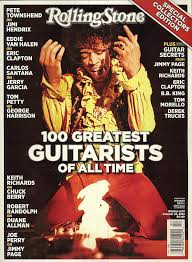 Rolling Stone Magazine has become noteworthy for compiling lists of the “100 Greatest” in many categories. One of the most popular compilations in this series was the 2012 “Special Collectors Edition” entitled “100 Greatest Guitarists Of All Time.” This interesting edition offers insights on the inventive talent of each guitarist and how influential each was upon the world of popular music. Rolling Stone Magazine has become noteworthy for compiling lists of the “100 Greatest” in many categories. One of the most popular compilations in this series was the 2012 “Special Collectors Edition” entitled “100 Greatest Guitarists Of All Time.” This interesting edition offers insights on the inventive talent of each guitarist and how influential each was upon the world of popular music.
 Although many on this list have influenced each other during their careers, as well as played together on various occasions, it's interesting to note that one of these world-renowned guitarists have actually written a song about another guitarist on the same list. George Harrison, who ranked at #11, wrote a song specifically about Eric Clapton, who ranked at #2. And surprisingly, the subject matter of the song has absolutely nothing to do with the guitar. The song was “Savoy Truffle.” Although many on this list have influenced each other during their careers, as well as played together on various occasions, it's interesting to note that one of these world-renowned guitarists have actually written a song about another guitarist on the same list. George Harrison, who ranked at #11, wrote a song specifically about Eric Clapton, who ranked at #2. And surprisingly, the subject matter of the song has absolutely nothing to do with the guitar. The song was “Savoy Truffle.”
Songwriting History
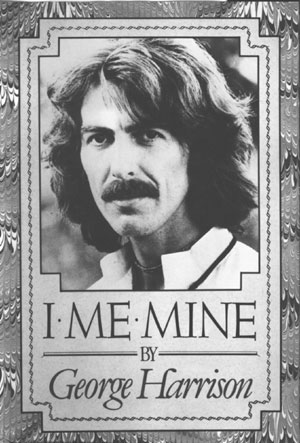 “'Savoy Truffle' is a funny one written whist hanging out with Eric Clapton in the '60's,” wrote George in his book “I Me Mine.” “At that time he had a lot of cavities in his teeth and needed dental work. He always had a toothache but he ate a lot of chocolates – he couldn't resist them, and once he saw a box he had to eat them all. He was over at my house, and I had a box of 'Good News' chocolates on the table and wrote the song from the names inside the lid: 'Creme Tangerine, Montelimart'...” From this description it appears that Eric was actually eating the chocolates while George was writing the song! “'Savoy Truffle' is a funny one written whist hanging out with Eric Clapton in the '60's,” wrote George in his book “I Me Mine.” “At that time he had a lot of cavities in his teeth and needed dental work. He always had a toothache but he ate a lot of chocolates – he couldn't resist them, and once he saw a box he had to eat them all. He was over at my house, and I had a box of 'Good News' chocolates on the table and wrote the song from the names inside the lid: 'Creme Tangerine, Montelimart'...” From this description it appears that Eric was actually eating the chocolates while George was writing the song!
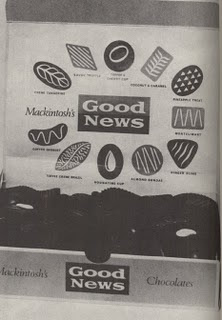 In this quote from 1977, George embellishes the story a little: “He'd got this real sweet tooth and he had just had his mouth worked on. His dentist said he was through with candy. So, as a tribute, I wrote 'You'll have to have them all pulled out, after the Savoy Truffle.' The truffle was some kind of sweet, just like all the rest, 'crème tangerine,' 'ginger sling,' just candy, to tease Eric (Clapton).” In actuality, the majority of the lyrics in the verses were taken directly from that actual box of chocolates, which has been identified as “Mackintosh's Good News Double Centre Chocolate Assortment.” The names “Cherry Creme” and “Coconut Fudge” were invented by George, however, to round out the verses. In this quote from 1977, George embellishes the story a little: “He'd got this real sweet tooth and he had just had his mouth worked on. His dentist said he was through with candy. So, as a tribute, I wrote 'You'll have to have them all pulled out, after the Savoy Truffle.' The truffle was some kind of sweet, just like all the rest, 'crème tangerine,' 'ginger sling,' just candy, to tease Eric (Clapton).” In actuality, the majority of the lyrics in the verses were taken directly from that actual box of chocolates, which has been identified as “Mackintosh's Good News Double Centre Chocolate Assortment.” The names “Cherry Creme” and “Coconut Fudge” were invented by George, however, to round out the verses.
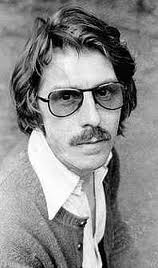 “I got stuck with the two bridges for a while and Derek Taylor wrote some of the words in the middle – 'You know that what you eat you are,'” continued George. Apple press officer Derek Taylor explains: “George said, 'We need a bit here, da da, da da da da, da da,' and I thought again of my good friend, Alan Pariser. He had done a film called 'You Are What You Eat,' which was a very pippy thing; 'Don't eat meat, man, or you'll be filled with the adrenaline of frightened animals.' So I said to George, 'You know that what you eat you are.' So that was that bit for 'Savoy Truffle.'” The film "You Are What You Eat" was released in September of 1968 and featured an interesting collaboration between singer / ukuleleist Tiny Tim and The Band, both of which were admired by George at the time. Along with Derek's lyrical contribution to John's “Happiness Is A Warm Gun,” this was his second collaborative effort for the “White Album,” neither of which he received recognition nor royalty payments for. “I got stuck with the two bridges for a while and Derek Taylor wrote some of the words in the middle – 'You know that what you eat you are,'” continued George. Apple press officer Derek Taylor explains: “George said, 'We need a bit here, da da, da da da da, da da,' and I thought again of my good friend, Alan Pariser. He had done a film called 'You Are What You Eat,' which was a very pippy thing; 'Don't eat meat, man, or you'll be filled with the adrenaline of frightened animals.' So I said to George, 'You know that what you eat you are.' So that was that bit for 'Savoy Truffle.'” The film "You Are What You Eat" was released in September of 1968 and featured an interesting collaboration between singer / ukuleleist Tiny Tim and The Band, both of which were admired by George at the time. Along with Derek's lyrical contribution to John's “Happiness Is A Warm Gun,” this was his second collaborative effort for the “White Album,” neither of which he received recognition nor royalty payments for.
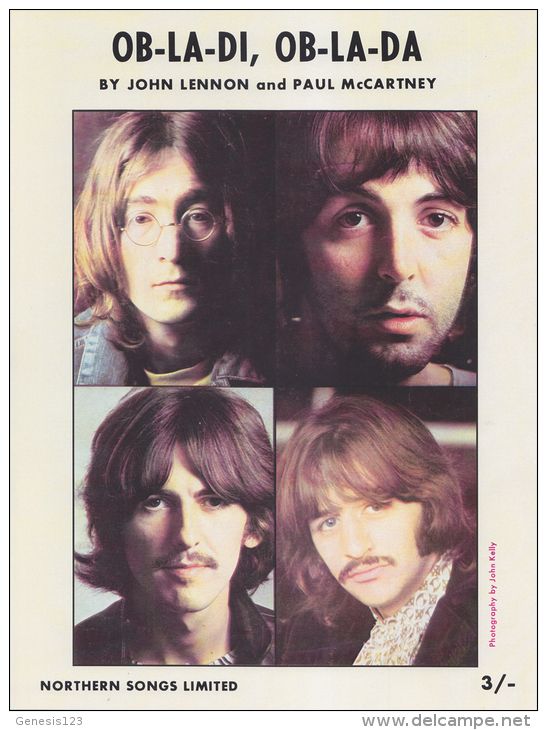 George cleverly rhymed “you know that what you eat you are” with “we all know Ob-la-di-bla-da,” possibly as an inside joke between the band members as to their repeatedly having that song drilled into their heads during the extensive time it took to record that song. The other bridge George wrote simply as a warning to Eric about how “when the pain comes through” because of his rotten teeth, it will make him “shout aloud." On George's handwritten lyric sheet for the song, the line originally was "when you get in pain, then you will know and how," this lyric being crossed out and replaced accordingly. Also, George originally stated that the "sweat is going to fill your brow," which rhymed with "now," "how" and "loud" from that verse, but George decided to not be concerned with the rhyme and went with "head" instead. George cleverly rhymed “you know that what you eat you are” with “we all know Ob-la-di-bla-da,” possibly as an inside joke between the band members as to their repeatedly having that song drilled into their heads during the extensive time it took to record that song. The other bridge George wrote simply as a warning to Eric about how “when the pain comes through” because of his rotten teeth, it will make him “shout aloud." On George's handwritten lyric sheet for the song, the line originally was "when you get in pain, then you will know and how," this lyric being crossed out and replaced accordingly. Also, George originally stated that the "sweat is going to fill your brow," which rhymed with "now," "how" and "loud" from that verse, but George decided to not be concerned with the rhyme and went with "head" instead.
As to the time of writing, since George describes the song being written at his 'Kinfauns' home, it undoubtedly was written sometime between his return from India on April 13th, 1968 and the first day The Beatles brought the song into the recording studio on October 3rd, 1968.
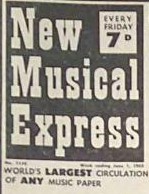 A week or so before George began recording the song with The Beatles, on September 21st, an issue of the British magazine New Musical Express came out in which he explained how he was trying to distance himself from spiritual songwriting for the "White Album." "I now want to write songs that don't have any meaning because I'm a bit fed up with people coming up and saying, 'Hey, what's it all about? What does it mean?'...This next album is much simpler than 'Pepper' because it's more down to guitars, bass and drums, and maybe a piano...It's still all 'Within You, Without You,' but I don't want to go into that any more, 'cause now I'm being a rock 'n' roll star!" Whereas "While My Guitar Gently Weeps" and "Long, Long, Long" have masked spiritual overtones, "Savoy Truffle" is straight up rock 'n' roll with a frivilous subject matter just as George intended. Interestingly, his songwriting on "Savoy Truffle" appears to be a reflection of John's method of finding interesting words wherever they might turn up, such as on "Being For The Benefit Of Mr. Kite!" and "A Day In The Life" among many others. A week or so before George began recording the song with The Beatles, on September 21st, an issue of the British magazine New Musical Express came out in which he explained how he was trying to distance himself from spiritual songwriting for the "White Album." "I now want to write songs that don't have any meaning because I'm a bit fed up with people coming up and saying, 'Hey, what's it all about? What does it mean?'...This next album is much simpler than 'Pepper' because it's more down to guitars, bass and drums, and maybe a piano...It's still all 'Within You, Without You,' but I don't want to go into that any more, 'cause now I'm being a rock 'n' roll star!" Whereas "While My Guitar Gently Weeps" and "Long, Long, Long" have masked spiritual overtones, "Savoy Truffle" is straight up rock 'n' roll with a frivilous subject matter just as George intended. Interestingly, his songwriting on "Savoy Truffle" appears to be a reflection of John's method of finding interesting words wherever they might turn up, such as on "Being For The Benefit Of Mr. Kite!" and "A Day In The Life" among many others.
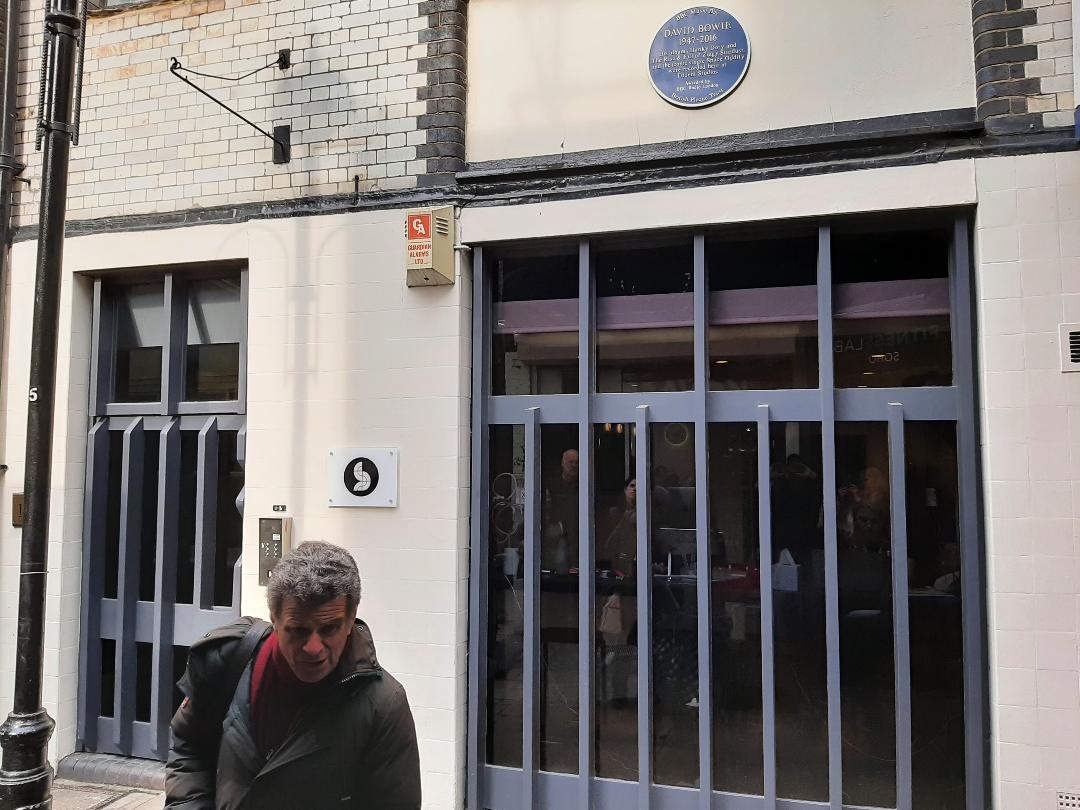
The former Trident Studios where The Beatles recorded "Savoy Truffle." (Pictured with author and tour guide Richard Porter.)
Recording History
As stated above, October 3rd, 1968 was the first day George Harrison brought the song "Savoy Truffle" into the recording studio. Since no demo recording is known to exist, George may have taken this studio time to teach the others this newly written composition, the time of the session running from 4 pm until 2:30 am the following morning. This may very well be the case especially since only one take was committed to tape during this long session, the remainder of the time undoubtedly being used for rehearsal.
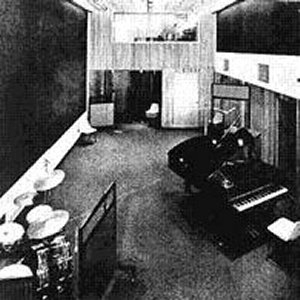 However, they were not in their usual EMI Studios on this day. Instead they were at London's Trident Studios, as they were for this entire week due to either a needed change of scenery or because EMI was already booked solid. By the end of the session, 'take one,' which was recorded onto an eight-track tape and ended up being used for the finished product, was complete. This take consisted of Ringo on drums on track one, Paul on bass on track two, and George on rhythm guitar on track three. John did not contribute to the recording and may not have been present on this day at all. In fact, John did not appear in any capacity on “Savoy Truffle” throughout its recording process. However, they were not in their usual EMI Studios on this day. Instead they were at London's Trident Studios, as they were for this entire week due to either a needed change of scenery or because EMI was already booked solid. By the end of the session, 'take one,' which was recorded onto an eight-track tape and ended up being used for the finished product, was complete. This take consisted of Ringo on drums on track one, Paul on bass on track two, and George on rhythm guitar on track three. John did not contribute to the recording and may not have been present on this day at all. In fact, John did not appear in any capacity on “Savoy Truffle” throughout its recording process.
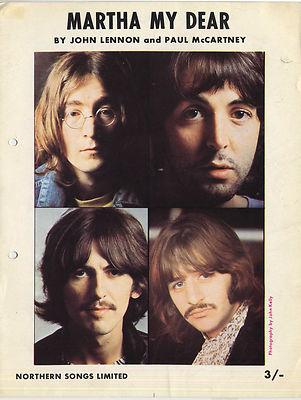 The second session for the song was on October 5th, 1968, the fifth and final Trident recording sessions of this week. The first thing on the agenda for this day was George committing to tape acoustic rhythm guitar along with his lead vocals for the song, overdubbed with a good amount of “Artificial Double-Tracking” (or ADT) to create the desired effect. Paul also overdubbed sporadic harmony vocals simultaneously with George's guitar / vocal overdub, all of this apperantly being allocated to track five of the eight-track tape. This being performed to George's satisfaction, attention then went to adding overdubs to Paul's previously recorded “Martha My Dear.” Then commenced some assorted mono and stereo mixes of other songs, ending the session at 1 am the following morning. The second session for the song was on October 5th, 1968, the fifth and final Trident recording sessions of this week. The first thing on the agenda for this day was George committing to tape acoustic rhythm guitar along with his lead vocals for the song, overdubbed with a good amount of “Artificial Double-Tracking” (or ADT) to create the desired effect. Paul also overdubbed sporadic harmony vocals simultaneously with George's guitar / vocal overdub, all of this apperantly being allocated to track five of the eight-track tape. This being performed to George's satisfaction, attention then went to adding overdubs to Paul's previously recorded “Martha My Dear.” Then commenced some assorted mono and stereo mixes of other songs, ending the session at 1 am the following morning.
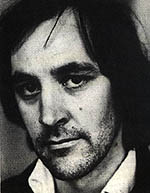 With a good portion of “Savoy Truffle” being complete, George decided to shift gears and introduce yet another original composition for inclusion on the album, “Long Long Long.” It wasn't until after this new song was fully completed that George returned his attention to “Savoy Truffle,” the delay possibly the result of a need for a brass overdub to be arranged. “George Martin suggested that I score 'Savoy Truffle' for saxophones,” remembers Chris Thomas, (George) Martin uncharacteristically delegating this responsibility instead of tackling it himself as usual. “I must say that I found it a real chore,” 21-year-old Chris Thomas continues. With a good portion of “Savoy Truffle” being complete, George decided to shift gears and introduce yet another original composition for inclusion on the album, “Long Long Long.” It wasn't until after this new song was fully completed that George returned his attention to “Savoy Truffle,” the delay possibly the result of a need for a brass overdub to be arranged. “George Martin suggested that I score 'Savoy Truffle' for saxophones,” remembers Chris Thomas, (George) Martin uncharacteristically delegating this responsibility instead of tackling it himself as usual. “I must say that I found it a real chore,” 21-year-old Chris Thomas continues.
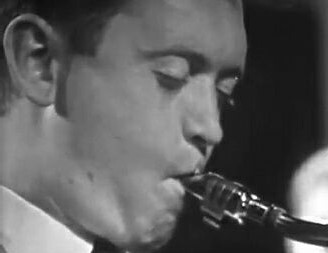 The Beatles were now back at EMI Studios continuing their recording for the remainder of the “White Album.” After sitting for six days, the tape of “Savoy Truffle” recorded at Trident Studios was now added to in EMI Studio Two on October 11th, 1968, the session beginning at 3 pm. Six saxophonists, including Art Ellefson, were hired to record Chris Thomas's score for a three-hour session that was to end at 6 pm. Their brass overdub was recorded onto tracks six and seven of the eight-track tape. The Beatles were now back at EMI Studios continuing their recording for the remainder of the “White Album.” After sitting for six days, the tape of “Savoy Truffle” recorded at Trident Studios was now added to in EMI Studio Two on October 11th, 1968, the session beginning at 3 pm. Six saxophonists, including Art Ellefson, were hired to record Chris Thomas's score for a three-hour session that was to end at 6 pm. Their brass overdub was recorded onto tracks six and seven of the eight-track tape.
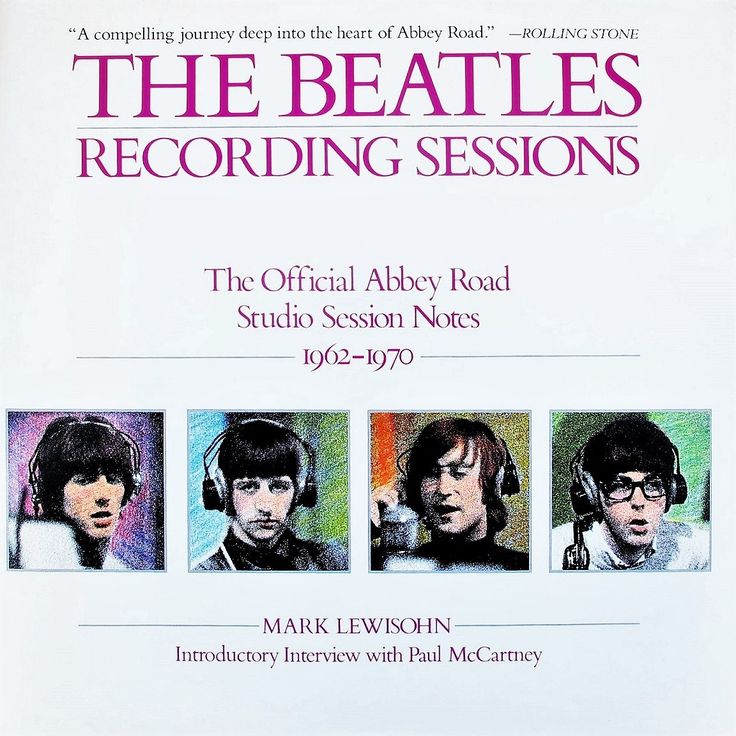 Engineer Brian Gibson, as related in Mark Lewisohn's book “The Beatles Recording Sessions,” remembers: “The session men were playing really well – there's nothing like a good brass section letting rip – and it sounded fantastic. But having got this really nice sound, George (Harrison) turned to (engineer) Ken Scott and said, 'Right, I want to distort it.' So I had to plug-up two high-gain amplifiers which overloaded and deliberately introduced a lot of distortion, completely tearing the sound to pieces and making it dirty. The musicians came up to the control room to listen to a playback and George said to them, 'Before you listen, I've got to apologize for what I've done to your beautiful sound. Please forgive me, but it's the way I want it!' I don't think they particularly enjoyed hearing their magnificent sound screwed up quite so much but they realized that this was what George wanted, and that it was their job to provide it.” Engineer Brian Gibson, as related in Mark Lewisohn's book “The Beatles Recording Sessions,” remembers: “The session men were playing really well – there's nothing like a good brass section letting rip – and it sounded fantastic. But having got this really nice sound, George (Harrison) turned to (engineer) Ken Scott and said, 'Right, I want to distort it.' So I had to plug-up two high-gain amplifiers which overloaded and deliberately introduced a lot of distortion, completely tearing the sound to pieces and making it dirty. The musicians came up to the control room to listen to a playback and George said to them, 'Before you listen, I've got to apologize for what I've done to your beautiful sound. Please forgive me, but it's the way I want it!' I don't think they particularly enjoyed hearing their magnificent sound screwed up quite so much but they realized that this was what George wanted, and that it was their job to provide it.”
 Another problem apparent at this point was the quality of the recording done at Trident Studios. Geoff Emerick, in his book “Here, There And Everywhere,” explains: “All The Beatles tapes that had been recorded at Trident sounded peculiar to me because of what I suspected to be technical problems. I was vocal about my opinions, and word eventually got back to some people at Trident, who asked me to come in to talk to them about it. They made it clear that they would prefer it if I kept my opinion to myself in future.” Engineer Ken Scott left EMI and began working at Trident some time later. “The first thing he did upon arriving was to sort out the studio's technical problems,” continues Emerick, “and from that point on their tapes sounded fine.” Another problem apparent at this point was the quality of the recording done at Trident Studios. Geoff Emerick, in his book “Here, There And Everywhere,” explains: “All The Beatles tapes that had been recorded at Trident sounded peculiar to me because of what I suspected to be technical problems. I was vocal about my opinions, and word eventually got back to some people at Trident, who asked me to come in to talk to them about it. They made it clear that they would prefer it if I kept my opinion to myself in future.” Engineer Ken Scott left EMI and began working at Trident some time later. “The first thing he did upon arriving was to sort out the studio's technical problems,” continues Emerick, “and from that point on their tapes sounded fine.”
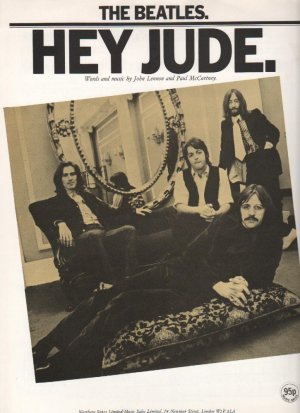 As for the other Beatles recordings done at Trident, such as “Hey Jude,” “Dear Prudence” and “Martha My Dear,” alterations were made to the sound quality at EMI to match the high standards of the rest of their catalog. Unfortunately, such efforts were not made for “Savoy Truffle,” resulting in what Ian MacDonald describes in his book “Revolution In The Head” as “a violently compressed production.” Fortunately, the remastering done for the 2009 release of the album rectifies this issue to a good degree. As for the other Beatles recordings done at Trident, such as “Hey Jude,” “Dear Prudence” and “Martha My Dear,” alterations were made to the sound quality at EMI to match the high standards of the rest of their catalog. Unfortunately, such efforts were not made for “Savoy Truffle,” resulting in what Ian MacDonald describes in his book “Revolution In The Head” as “a violently compressed production.” Fortunately, the remastering done for the 2009 release of the album rectifies this issue to a good degree.
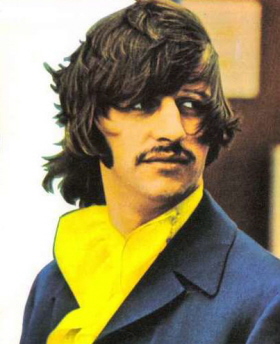 On October 14th, 1968, the finishing touches to “Savoy Truffle” were recorded, this being the final session needed to complete the entire “White Album.” On this morning, Ringo and his family flew out for a two-week vacation to Sardinia so he wasn't present for this final session, nor for the sequencing and final mixing work for the album, confident that his fellow bandmates would take care of that satisfactorily. The rest of them (George and Paul at least) were present and arrived on this day around 7 pm. On October 14th, 1968, the finishing touches to “Savoy Truffle” were recorded, this being the final session needed to complete the entire “White Album.” On this morning, Ringo and his family flew out for a two-week vacation to Sardinia so he wasn't present for this final session, nor for the sequencing and final mixing work for the album, confident that his fellow bandmates would take care of that satisfactorily. The rest of them (George and Paul at least) were present and arrived on this day around 7 pm.
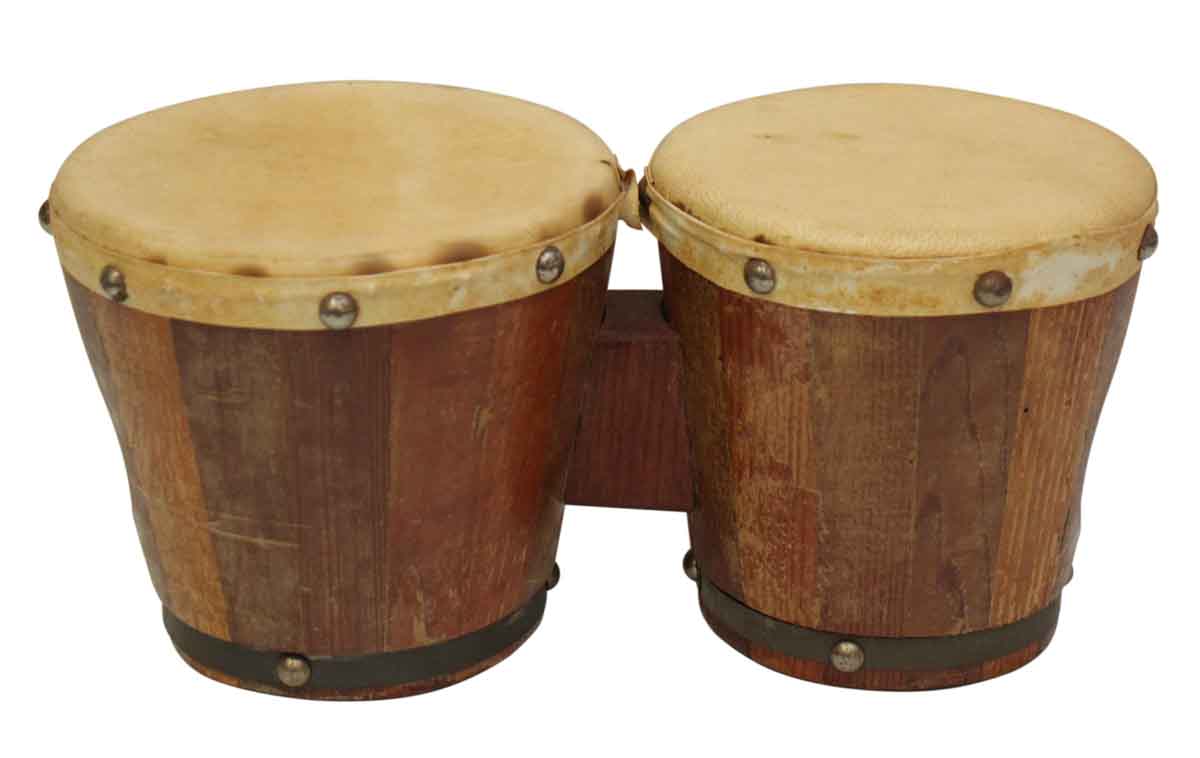 After creating a couple stereo mixes for other “White Album” songs, they set their sights on finally finishing off “Savoy Truffle.” Overdubs comprised George playing the lead guitar parts, production assistant Chris Thomas on electric piano and organ, and bongos which were quite possibly played by Paul since Ringo was not present. Documentation does not confirm this, but it appears that track eight of the eight-track tape contains all if not most of the overdubs performed on this day, the organ played by Chris Thomas possible being played when he wasn't on the electric piano. The "Track By Track" section in the Super Deluxe "White Album" box set, written by Kevin Howlett, reveals that George and Paul must have re-recorded, or double-tracked, their vocal parts onto track seven on this day since "it is possible to hear the song playing through their headphones - with the saxes already present" on the vocals that are contained on that track. After creating a couple stereo mixes for other “White Album” songs, they set their sights on finally finishing off “Savoy Truffle.” Overdubs comprised George playing the lead guitar parts, production assistant Chris Thomas on electric piano and organ, and bongos which were quite possibly played by Paul since Ringo was not present. Documentation does not confirm this, but it appears that track eight of the eight-track tape contains all if not most of the overdubs performed on this day, the organ played by Chris Thomas possible being played when he wasn't on the electric piano. The "Track By Track" section in the Super Deluxe "White Album" box set, written by Kevin Howlett, reveals that George and Paul must have re-recorded, or double-tracked, their vocal parts onto track seven on this day since "it is possible to hear the song playing through their headphones - with the saxes already present" on the vocals that are contained on that track.
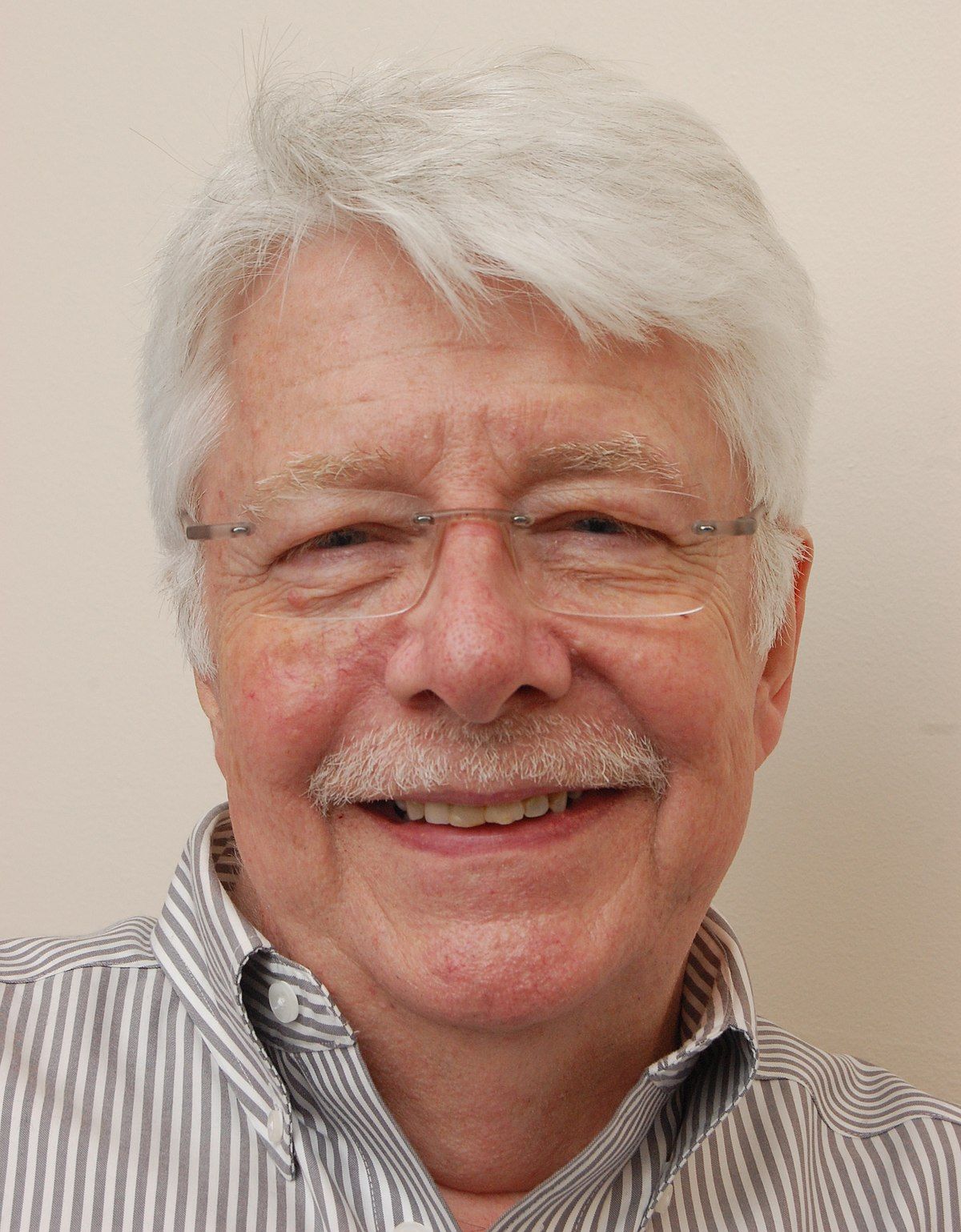 With this complete, both the mono and stereo mixes of the song were created on this day by George Martin and engineers Ken Scott and John Smith with input from George and Paul. Six attempts at the mono mix were first made, the sixth being chosen as best. The startling lead guitar overdub was faded down at the end of the second verse, but not after the first chord is heard. The end of the guitar solo is different from the commonly heard stereo mix here also, extending into where the vocals come back in. With this complete, both the mono and stereo mixes of the song were created on this day by George Martin and engineers Ken Scott and John Smith with input from George and Paul. Six attempts at the mono mix were first made, the sixth being chosen as best. The startling lead guitar overdub was faded down at the end of the second verse, but not after the first chord is heard. The end of the guitar solo is different from the commonly heard stereo mix here also, extending into where the vocals come back in.
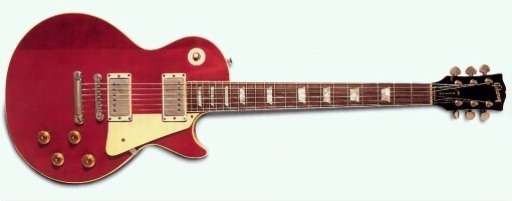 Two attempts at the stereo mix were made on this day as well, the second being the keeper. The lead guitar overdub at the end of the second verse was not faded down this time, but extraneous sounds heard during the solo in the mono mix were properly faded down in this stereo mix. More pains were taken to make the end of the guitar solo sound more concise this time around. Two attempts at the stereo mix were made on this day as well, the second being the keeper. The lead guitar overdub at the end of the second verse was not faded down this time, but extraneous sounds heard during the solo in the mono mix were properly faded down in this stereo mix. More pains were taken to make the end of the guitar solo sound more concise this time around.
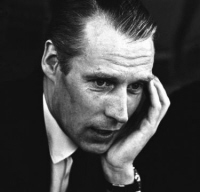 During these mixing sessions, the subject of the distorted sax overdub became a concern for George Martin. Ken Scott recalls: "When we were mixing it, George Martin walks into the control room. He said, 'Uh, isn't it a bit bright?' and George (Harrison) just turns around to him and says, 'Yeah, and I like it!' and just turns around and we carry on working. George Martin just walked out." During these mixing sessions, the subject of the distorted sax overdub became a concern for George Martin. Ken Scott recalls: "When we were mixing it, George Martin walks into the control room. He said, 'Uh, isn't it a bit bright?' and George (Harrison) just turns around to him and says, 'Yeah, and I like it!' and just turns around and we carry on working. George Martin just walked out."
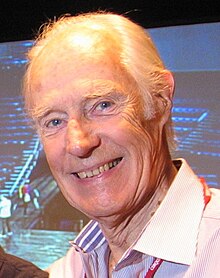 Sometime between 2004 and 2006, George Martin and his son Giles Martin returned to the song during the making of the soundtrack to the Cirque du Soleil show “Love” and its accompanying album. George Martin thought enough of Chris Thomas's brass score that he included it in the mashup of “Drive My Car/The Word/What You're Doing." Sometime between 2004 and 2006, George Martin and his son Giles Martin returned to the song during the making of the soundtrack to the Cirque du Soleil show “Love” and its accompanying album. George Martin thought enough of Chris Thomas's brass score that he included it in the mashup of “Drive My Car/The Word/What You're Doing."
 Giles Martin, along with engineer Sam Okell, returned to the master tape once again in 2018 to create a new stereo mix of "Savoy Truffle" for inclusion on the various 50th Anniversary editions of the "White Album." They also muted the vocal tracks of the master tape to create an interesting instrumental version of the song for inclusion in the Super Deluxe box set, George's lead guitar parts appearing in full throughout the song. Giles Martin, along with engineer Sam Okell, returned to the master tape once again in 2018 to create a new stereo mix of "Savoy Truffle" for inclusion on the various 50th Anniversary editions of the "White Album." They also muted the vocal tracks of the master tape to create an interesting instrumental version of the song for inclusion in the Super Deluxe box set, George's lead guitar parts appearing in full throughout the song.
Song Structure and Style
The structure used for "Savoy Truffle" is quite standard for Beatles compositions, namely 'verse/ verse/ bridge/ verse (solo)/ bridge/ verse' (or aababa) with a brief introduction appearing at the beginning of the first two verses. However, as usual for this time in their career, there are a good degree of intricacies thrown in for good measure.
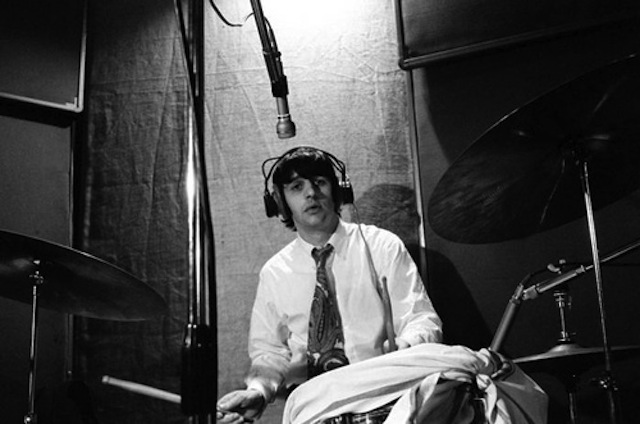 After a brief snare drum fill from Ringo, a three-measure introduction is first heard which consists of the the rhythm track instruments of George on rhythm guitar, Paul on bass and Ringo on drums with Chris Thomas's overdubbed electric piano taking the spotlight. Two full measures in 4/4 time are heard but then all of this drops off with a final open hi-hat beat for the third measure which is in 3/4 time. On the rhythm track, George plays the melody line by himself as a guide, his lead vocal line “Creme Tangerine” being overdubbed on top of this later. After a brief snare drum fill from Ringo, a three-measure introduction is first heard which consists of the the rhythm track instruments of George on rhythm guitar, Paul on bass and Ringo on drums with Chris Thomas's overdubbed electric piano taking the spotlight. Two full measures in 4/4 time are heard but then all of this drops off with a final open hi-hat beat for the third measure which is in 3/4 time. On the rhythm track, George plays the melody line by himself as a guide, his lead vocal line “Creme Tangerine” being overdubbed on top of this later.
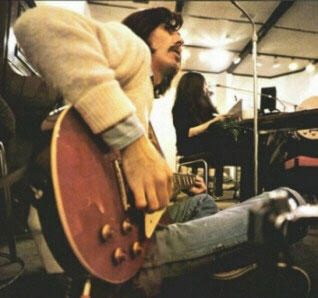 The first verse begins next, which is fifteen measures long and is fully in 4/4 time. The downbeat comes in on the last syllable of the word “Tangerine” from the introduction, the bass and drums from the rhythm track coming back in at the same time. At the beginning of the second measure, George begins his rhythm guitar playing again and is joined by the brass section for the first time. Ringo plays a steady 4/4 drum pattern riding on his hi-hat throughout most of the verse with anticipated kick drum and snare beats on measures three, six, seven and eleven. George adds in some overdubbed lead guitar chops in the twelfth through fourteenth measures while he changes to falsetto during the key line “you'll have to have them all pulled out after the Savoy Truffle,” being joined by Paul on harmony for this line. The fifteenth measure consists of four accented notes by all instruments, followed by a 'Beatles break' with only a couple simple snare drum beats and percussive taps (bongos?) in the open space. The first verse begins next, which is fifteen measures long and is fully in 4/4 time. The downbeat comes in on the last syllable of the word “Tangerine” from the introduction, the bass and drums from the rhythm track coming back in at the same time. At the beginning of the second measure, George begins his rhythm guitar playing again and is joined by the brass section for the first time. Ringo plays a steady 4/4 drum pattern riding on his hi-hat throughout most of the verse with anticipated kick drum and snare beats on measures three, six, seven and eleven. George adds in some overdubbed lead guitar chops in the twelfth through fourteenth measures while he changes to falsetto during the key line “you'll have to have them all pulled out after the Savoy Truffle,” being joined by Paul on harmony for this line. The fifteenth measure consists of four accented notes by all instruments, followed by a 'Beatles break' with only a couple simple snare drum beats and percussive taps (bongos?) in the open space.
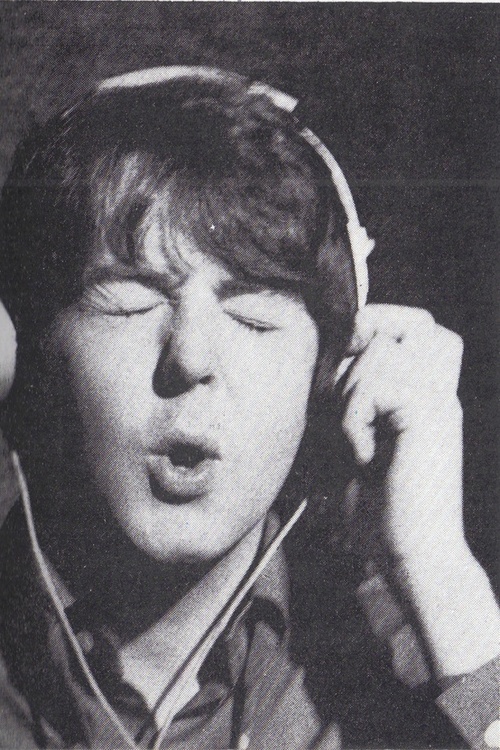 This is followed by a repeat of the introduction, the only difference being a slight variation in the electric piano part. The second verse then appears which in most respects is instrumentally identical to the first. George's rhythm guitar is played with a stronger amount of gusto for this verse and Ringo adds in a drum break at the end of the seventh measure. Paul adds harmony vocals this time around from the fourth measure on with an excited “whoo” on top of Ringo's anticipated cymbal accent on the eleventh measure. George's overdubbed lead guitar chops in the twelfth through fourteenth measures are now more shrill to the ear (stereo mix only) as a tambourine is faintly heard for the first time in these measures as well. During the 'Beatles break' in the final measure one can hear Paul make a subtle pigeon-like “coo” in the background amid the drum beats (omitted in the 50th Anniversay mix). This is followed by a repeat of the introduction, the only difference being a slight variation in the electric piano part. The second verse then appears which in most respects is instrumentally identical to the first. George's rhythm guitar is played with a stronger amount of gusto for this verse and Ringo adds in a drum break at the end of the seventh measure. Paul adds harmony vocals this time around from the fourth measure on with an excited “whoo” on top of Ringo's anticipated cymbal accent on the eleventh measure. George's overdubbed lead guitar chops in the twelfth through fourteenth measures are now more shrill to the ear (stereo mix only) as a tambourine is faintly heard for the first time in these measures as well. During the 'Beatles break' in the final measure one can hear Paul make a subtle pigeon-like “coo” in the background amid the drum beats (omitted in the 50th Anniversay mix).
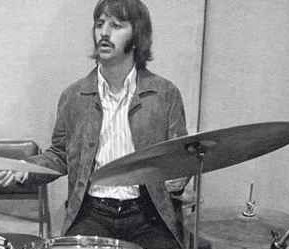 Next comes the first bridge which is eight measures in length. The full instrumentation from the rhythm track is present, with George emphasizing the two- and four-beats of measures one, two, five and six with staccato guitar chops. Ringo's work is cut out for him in this section with accented cymbal crashes in measures three, four, seven and eight, these crashes also being emphasized by guitar, bass and horns, assorted drum fills encasing these crashes at every turn. Also present are a backdrop of Hammond organ throughout the bridge, a slight “ooh” from Paul in the sixth measure after the line “the sweat is going to fill your head,” and a tambourine hit in the final measure. Next comes the first bridge which is eight measures in length. The full instrumentation from the rhythm track is present, with George emphasizing the two- and four-beats of measures one, two, five and six with staccato guitar chops. Ringo's work is cut out for him in this section with accented cymbal crashes in measures three, four, seven and eight, these crashes also being emphasized by guitar, bass and horns, assorted drum fills encasing these crashes at every turn. Also present are a backdrop of Hammond organ throughout the bridge, a slight “ooh” from Paul in the sixth measure after the line “the sweat is going to fill your head,” and a tambourine hit in the final measure.
 What follows next is an instrumental verse which, since it doesn't follow an introduction this time, is a full sixteen measures in length. The brass take on a fuller role during this section of the song while George's overdubbed solo is highly distorted and follows a somewhat spiced-up version of the melody line. This continues for the first twelve measures, and then in measures thirteen through sixteen George and Paul vocally reprise the key line of the verses. Ringo disregards the anticipated crashes usually heard throughout the previous verses, replacing them with drum fills in measures two, four and twelve and then finishing off his usual accents in measure sixteen. The organ is also present as a pad for this entire verse. What follows next is an instrumental verse which, since it doesn't follow an introduction this time, is a full sixteen measures in length. The brass take on a fuller role during this section of the song while George's overdubbed solo is highly distorted and follows a somewhat spiced-up version of the melody line. This continues for the first twelve measures, and then in measures thirteen through sixteen George and Paul vocally reprise the key line of the verses. Ringo disregards the anticipated crashes usually heard throughout the previous verses, replacing them with drum fills in measures two, four and twelve and then finishing off his usual accents in measure sixteen. The organ is also present as a pad for this entire verse.
After a nearly identical repeat of the bridge is heard, the only difference being the new set of lyrics, the final verse then commences which is similar to the instrumental verse in that it doesn't follow an introduction and is therefore sixteen measures long but with a repeat of the final four measures for emphasis, making a grand total of twenty measures in length.
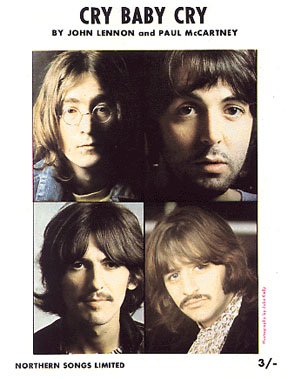 Lyrically it is a repeat of the first verse but with Paul joining in on harmony vocals from the fifth measure on to the end. The organ is faintly detected in the background and a strident overdubbed rhythm guitar is present as well from the third verse on. The tambourine brings the song home in this final verse as well, Paul even adding in another trademark “whoo” on the downbeat of the twelfth measure after the line “you know it's good news.” Paul even differentiates the repeated last lyric “you'll have to have them all pulled out” with an altered falsetto harmony. The final four accents of all instrumentation brings the arrangement to a startling conclusion, which acts as a brilliant transition to the subtlety of John's “Cry Baby Cry” which immediately follows it on the album. Lyrically it is a repeat of the first verse but with Paul joining in on harmony vocals from the fifth measure on to the end. The organ is faintly detected in the background and a strident overdubbed rhythm guitar is present as well from the third verse on. The tambourine brings the song home in this final verse as well, Paul even adding in another trademark “whoo” on the downbeat of the twelfth measure after the line “you know it's good news.” Paul even differentiates the repeated last lyric “you'll have to have them all pulled out” with an altered falsetto harmony. The final four accents of all instrumentation brings the arrangement to a startling conclusion, which acts as a brilliant transition to the subtlety of John's “Cry Baby Cry” which immediately follows it on the album.
 Musicianship is at an all-time high on this track, George taking the lead in directing the proceedings. His guitar work is stellar, including his amazingly appropriate guitar solo, while his vocals are also top notch. Paul's bass is suitably subdued in the mix but his vocal work and periodic excited exclamations add to the celebratory nature of the recording. Ringo puts in a very detailed performance as well, showing himself as a well-seasoned professional who was up for any task. Musicianship is at an all-time high on this track, George taking the lead in directing the proceedings. His guitar work is stellar, including his amazingly appropriate guitar solo, while his vocals are also top notch. Paul's bass is suitably subdued in the mix but his vocal work and periodic excited exclamations add to the celebratory nature of the recording. Ringo puts in a very detailed performance as well, showing himself as a well-seasoned professional who was up for any task.
American Releases
November 25th, 1968, was the release date for “The Beatles” (aka, the “White Album”) which featured “Savoy Truffle” as the fourth George Harrison composition of the two-disc set, the largest number of his original songs to appear on a Beatles album. It hit the stores as a double CD set for the first time on August 24th, 1987, was re-released as a CD in a 30th Anniversary Edition on November 23rd, 1998, then came out as a remastered CD set on September 9th, 2009, and finally as a mono vinyl set on September 9th, 2014. A vibrant new stereo mix of the album was then released on vinyl on November 9th, 2018 in celebration of its 50th Anniversary.
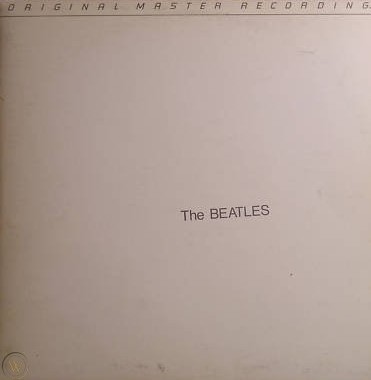 An interesting US vinyl edition of the “White Album” was released on January 7th, 1982, this being manufactured by Mobile Fidelity Sound Lab in Chatsworth, California as part of their "Original Master Recording" series. Their practice was to prepare a new master utilizing half-speed mastering technology from the original master tapes, in this case using the leased sub-master from Capitol Records. This release, which sounded superior to to all previous British and American pressings, was packaged in a non-embossed unnumbered cover that did not include the usual poster/lyric sheet or individual Beatles portraits as contained in standard releases. Nonetheless, this excellent edition of the album was only available for a short time and is quite collectible today. An interesting US vinyl edition of the “White Album” was released on January 7th, 1982, this being manufactured by Mobile Fidelity Sound Lab in Chatsworth, California as part of their "Original Master Recording" series. Their practice was to prepare a new master utilizing half-speed mastering technology from the original master tapes, in this case using the leased sub-master from Capitol Records. This release, which sounded superior to to all previous British and American pressings, was packaged in a non-embossed unnumbered cover that did not include the usual poster/lyric sheet or individual Beatles portraits as contained in standard releases. Nonetheless, this excellent edition of the album was only available for a short time and is quite collectible today.
As indicated above, the compilation album “Love,” which features part of the horn section of “Savoy Truffle” on one track, was released on November 20th, 2006.
The mono version of the song was first released in America as part of the CD box set “The Beatles In Mono,” which was released on September 9th, 2009, the vinyl edition being released on September 9th, 2014.
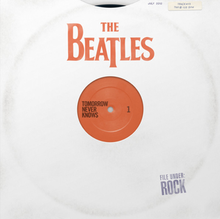 On July 24th, 2012, the iTunes Store, in partnership with EMI Records, released a Beatles compilation album entitled "Tomorrow Never Knows," the purpose of which was to highlight the group's influence on the history of rock music. The album had the approval of Paul and Ringo, as well as the board of directors for the estates of John and George, and was successful enough to peak at #24 on the Billboard album chart. Surprisingly, George's "Savoy Truffle" had the muster to be included on this release. On July 24th, 2012, the iTunes Store, in partnership with EMI Records, released a Beatles compilation album entitled "Tomorrow Never Knows," the purpose of which was to highlight the group's influence on the history of rock music. The album had the approval of Paul and Ringo, as well as the board of directors for the estates of John and George, and was successful enough to peak at #24 on the Billboard album chart. Surprisingly, George's "Savoy Truffle" had the muster to be included on this release.
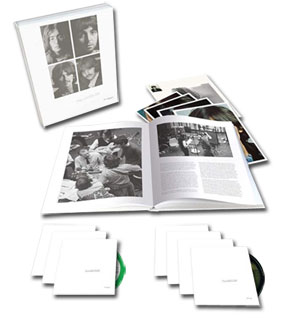 Various editions of the "White Album" were released on November 9th, 2018 to commemorate the 50th Anniversary of its original release. The "Deluxe" edition, which was made available in a 3CD set and a limited edition 180-gram 4LP vinyl set, contained the newly created Giles Martin mix of the "White Album." The "Super Deluxe" 6CD + 1Blu-ray edition also contained an instrumental mix from the master tape as recorded in October of 1968. Various editions of the "White Album" were released on November 9th, 2018 to commemorate the 50th Anniversary of its original release. The "Deluxe" edition, which was made available in a 3CD set and a limited edition 180-gram 4LP vinyl set, contained the newly created Giles Martin mix of the "White Album." The "Super Deluxe" 6CD + 1Blu-ray edition also contained an instrumental mix from the master tape as recorded in October of 1968.
Live Performances
Neither The Beatles nor George Harrison have ever performed the song before a live audience.
Conclusion
As a songwriter, George Harrison isn't known for his sense of humor. Whether the subject matter is romance ("I Need You," "Something"), his spiritual views ("Within You Without You," "The Inner Light"), his political views ("Taxman," "Piggies") or even his love of nature ("Here Comes The Sun"), his most known compositions are of a serious nature.
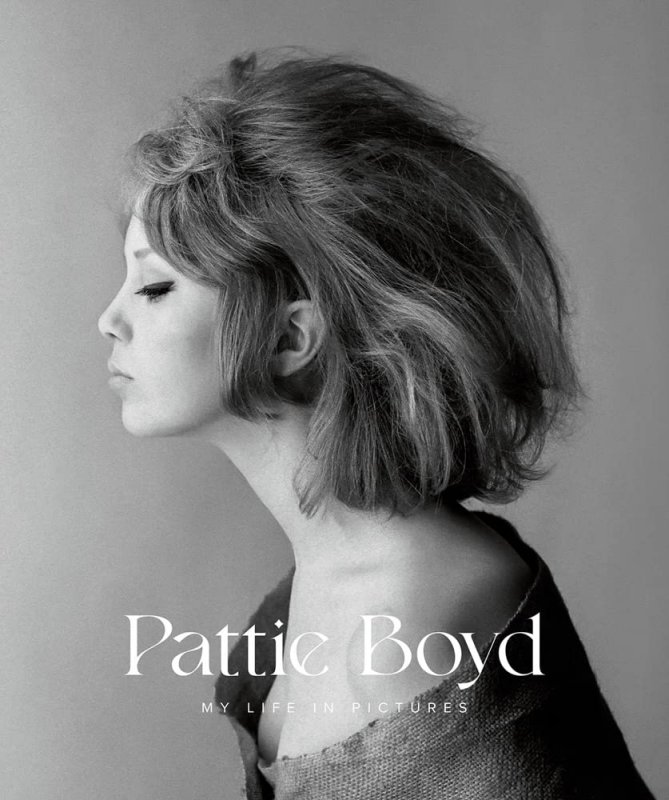 Easily overlooked, however, is “Savoy Truffle,” which the composer himself describes as “a funny one.” George's Liverpudlian wit kicked in to tease a good friend, who also happened to be a well known guitar legend even back in 1968. Their friendship, even after Eric's seduction of his wife Pattie Boyd, continued for the rest of George's life, which defines what an unconditional friendship should be. And if you can't tease a good friend, who can you tease? Easily overlooked, however, is “Savoy Truffle,” which the composer himself describes as “a funny one.” George's Liverpudlian wit kicked in to tease a good friend, who also happened to be a well known guitar legend even back in 1968. Their friendship, even after Eric's seduction of his wife Pattie Boyd, continued for the rest of George's life, which defines what an unconditional friendship should be. And if you can't tease a good friend, who can you tease?
Song Summary
"Savoy Truffle"
Written by George Harrison
- Song Written: April to October, 1968
- Song Recorded: October 3, 5, 11 and 14, 1968
- First US Release Date: November 25, 1968
- First US Album Release: Apple #SWBO-101 “The Beatles”
- US Single Release: n/a
- Highest Chart Position: n/a
- British Album Release: Apple #PCS 7067-7068 “The Beatles”
- Length: 2:55
- Key: G major
- Producers: George Martin
- Engineers: Barry Sheffield, Ken Scott, John Smith
Instrumentation (most likely):
- George Harrison - Lead Vocals, Lead and Rhythm Guitar (1957 Gibson Les Paul), Acoustic Guitar (1968 Gibson J-200)
- Paul McCartney - Bass (1964 Rickenbacker 4001 S), bongos?, backing vocals
- Ringo Starr - Drums (1964 Ludwig Super Classic Black Oyster Pearl), tambourine
- Chris Thomas - Electric Piano (1964 Hohner Pianet C), Organ (Hammond RT-3 w/ Leslie 145 cabinet)
- Ronald Ross - baritone saxophone
- Bernard George - baritone saxophone
- Art Ellefson - tenor saxophone
- Danny Moss - tenor saxophone
- Harry Klein - tenor saxophone
- Derek Collins - tenor saxophone
Written and compiled by Dave Rybaczewski
|
IF YOU WOULD LIKE TO MAKE A DONATION TO KEEP THIS WEBSITE UP AND RUNNING, PLEASE CLICK BELOW!
Sign Up Below for our MONTHLY BEATLES TRIVIA QUIZ!
|